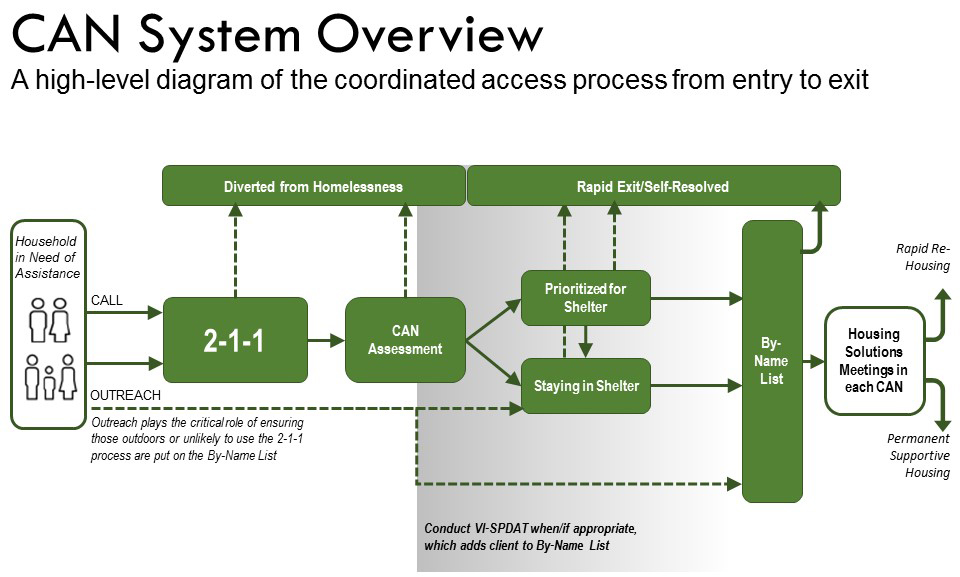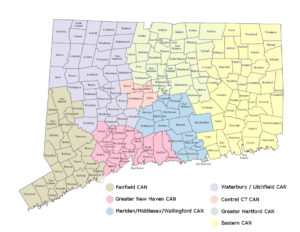Coordinated Access in Connecticut
Providers of service to people experiencing homelessness are coordinating their efforts to end homelessness in communities across Connecticut by developing Coordinated Access Networks (CANs).
Through these CANs, service providers work together to streamline and standardize the process for individuals and families to access assistance. Coordinated Access is required by the Federal HEARTH Act, which governs most of the federal funding communities receive to address homelessness, and supported by the State of Connecticut Department of Housing.
The primary goal is to help communities focus on rapidly ending each person’s homelessness by connecting them with appropriate housing and resources as quickly as possible.
What is Coordinated Access?
- A standardized, assessment and referral process to access community resources within a geographic region for people experiencing a housing crisis or homelessness.
- Individuals and Families call 2-1-1 from anywhere in the state to start the process.
- 2-1-1 refers anyone experiencing a housing crisis to the CAN in the caller’s community. The CAN accesses available resources to address the client’s needs.
Why implement Coordinated Access?
- Create a streamlined way for people in need to access assistance.
- Improve collaboration, communication, efficiency, and transparency between service providers.
- Improve service to consumers through a client-focused, coordinated system. Characteristics of Coordinated Access
- Accessible: easy to use and well-publicized to the homeless individuals and families who need it.
- Standardized: same process to access resources across communities, one shared assessment process across communities to understand client need and eligibility.
- Accountable: communities develop shared oversight mechanisms including policies, monitoring and improvement processes.
Webinar: Coordinated Entry; Perspectives from the Field
This Webinar on Coordinated Entry brings together leaders in coordinated entry from across the country to discuss their models, qualities of an effective coordinated entry system, and key components of HUD’s Coordinated entry policy brief, such as prioritization of most vulnerable persons. The speakers focus on the role of coordinated entry in behavioral health and in the homelessness assistance system as well as how it can be valuable in connecting clients to SAMHSA-funded programs with housing resources that will best meet their needs.
Statewide Contacts
- CAN State Wide Contact List
- Steve Dilella, Department of Housing: Steve.Dilella@ct.gov
Additional Resources:
- HUD guidance on why Coordinated Assessment is critical to ending homelessness locally
- Coordinated Entry Policy Brief from the Department of Housing and Urban Development (HUD)
- CT Coordinated Access: Background Information and Coordinated Access Network (CAN) Map
- CT Coordinated Access: Template for Coordinated Access Networks
- Coordinated Access Explained
Videos on Approaches to Ending Homelessness
| PATH Street Outreach Video Series | Inspiring Stories from Homelessness to Home! |
Latest Re-tooling the Crisis Response System News
- Understanding Assessment in Coordinated Access – Helpful Information from NAEH – 11/8/2013
- The I95 Alliance Promotes Regional Efforts to End Homelessness – 11/4/2013
- Opening Doors: The I-95 Alliance to Prevent and End Homelessness Fall Update 2013 – 10/30/2013
- Three Years Later, did Rapid Re-housing Work in Connecticut? – 10/7/2013


